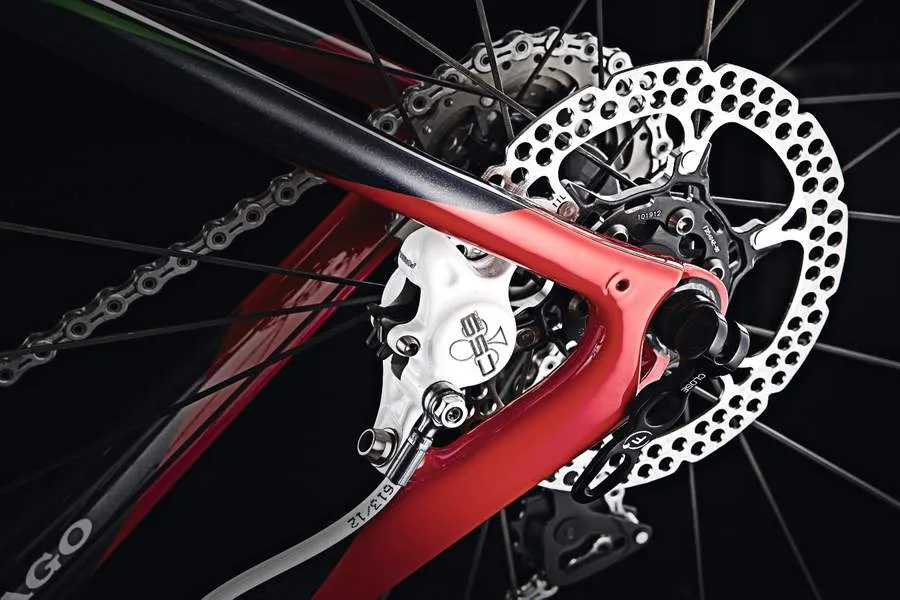Sponsored content
As with any future development in cycling, forecasting the success of a bike innovation doesn’t solely involve simple measurements based on previously-tested metrics. The enhancement of a design can steer a new creative train of thought not tapped into (or allowed) before - and road cycling, which is on the verge of a massive technological shift, could be the beneficiary of such an approach.
Later this year, it is anticipated the UCI, the body that governs cycling, will allow top Tour de France pros, such as Chris Froome (Team Sky), Peter Sagan (Cannondale) and Mark Cavendish (Omega Pharma-QuickStep) to race on bikes equipped with hydraulic disc brakes.
As reputed Cannondale design engineer Peter Denk claims: “The development will be a game changer: better braking performance and enhanced control will mean improved rider safety and will likely increase speeds as riders push their machinery to the limits of what it they are capable.”
There will be new avenues of design to explore, too. This means wheel rims, which currently need to have enough material to handle the braking forces and wear will become thinner and lighter. Not only will this offer a simple advantage of less weight, a low rotating mass will enhance acceleration and make bikes feel lighter and nimbler. More integration between the frame and fork will be expected as well.
Like the top bike designers that have already created top level road bikes equipped with disc brakes, Mazda engineers have pushed the boundaries of what technology it is possible to incorporate into the all-new Mazda3.
Rebuilt from the ground up, a suite of developments make the new car a safer vehicle to drive. For instance, the Smart City Brake Support is designed to help avoid or minimise the effects of low-speed collisions. The laser-based system continually monitors the gap and closing speed to the vehicle in front, and applies the brakes if it detects a collision is likely. This is standard across the range and operates at speeds up to approximately 20mph.
Recently awarded the maximum five stars in Euro NCAP safety ratings; it further exemplifies the all-new Mazda3 as a definitive front-runner in safety innovation. Its SKYACTIV-Body structure also enhances the car’s driving performance, and by using ultra-high tensile steel reinforcements to improve the rigidity of its body structure by around 30%, the overall weight of the car has been reduced without sacrificing safety performance.
The combination of the increased rigidity and lighter weight makes the road handling far more responsive and the car more agile to drive. This improves the driving dynamics and gives you a more enjoyable driving experience.
Find out more about the all-new Mazda3 here.


